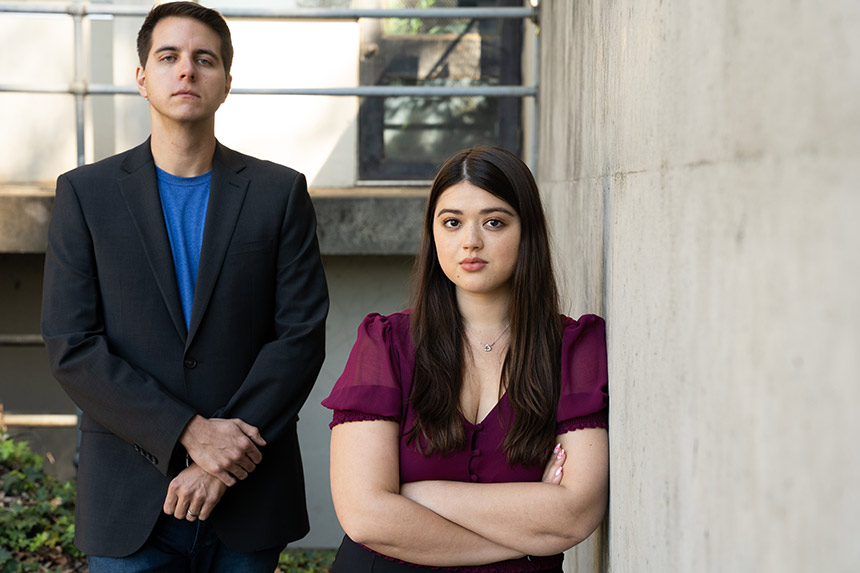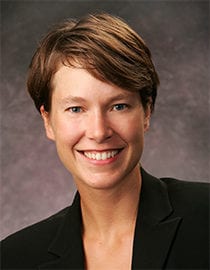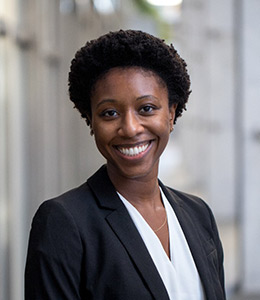
By Andrew Cohen
Starting with the entering J.D. class in August 2023, Berkeley Law students will be required to take at least one course on race and the law in order to graduate. Recent faculty approval of the Curriculum Committee’s proposal was welcome news to many across the school community.
“I am delighted that the faculty overwhelmingly approved this recommendation,” says Dean Erwin Chemerinsky. “No law student can be prepared to practice law in any field without an understanding of the role of race in American law, both historically and today. A distinguishing characteristic of Berkeley Law is our public mission, and this requirement sends an important message about our school’s commitment to equality and justice.”
Students will need to take at least two units from a menu of classes that focus on how laws and legal institutions shape and are shaped by racism and other forms of systemic inequality. The faculty also committed to consistently offering enough courses so all students can meet the requirement.
In addition, the faculty pledged to consistently offer one or more electives introducing students to a range of theoretical perspectives on law and legal institutions, beginning in spring 2024.
The proposal marks the culmination of work the Curriculum Committee began in fall 2020 considering possible changes to the curriculum related to both the intersection of race and law and the various theoretical frameworks in which the law can be understood.
Students played a key role in advancing the new requirement. The committe’s recommendation was prompted in part by a student proposal received in August 2020 and endorsed by 14 student organizations: The Womxn of Color Collective, Muslim Student Association, La Alianza Law Student Association, South Asian Law Student Association, Middle Eastern/North African Law Student Association, Asian Pacific American Law Student Association, Native American Law Students Association, The Law & Political Economy Society, Jewish Students Association at Berkeley Law, Food Justice Project, Coalition for Diversity, Law Students of African Descent, Queer Caucus, and Pilipinx Law Student Association.

Professor and Curriculum Committee Chair Molly Van Houweling says the committee also built on efforts by many predecessors, including the school’s Post-Ferguson Working Group, Equity and Inclusion Working Group, and Experiential Education Task Force. It also built on the committee’s efforts in 2018-19, when the faculty approved changes allowing for more availability of elective course options in the spring semester of 1L year.
“Many members of our community — including students, faculty, and staff — have contributed to this effort with their proposals, feedback, and expertise,” she says. “The Curriculum Committee and Berkeley Law’s administration are excited to work on implementing these important changes.”
Student commitment
Student Association at Berkeley Law (SABL) Co-Presidents Ximena Velázquez-Arenas ’23 and Yara Slaton ’23 credit the students on the Curriculum Committee this year (Alison Luna ’23 and Geoff Bacon ’23) and last year (Amalee Beattie ’22 and Maya Campbell ’21) for helping push the initiative forward.
“They played a huge role to make this a reality over at least the last two years,” Velázquez-Arenas says. “We were very inspired to support their organizing.”
Slaton notes that there were also “several groups of dedicated student and alumni leaders advocating for critical race theory, attending frequent organizing meetings, and providing mentorship over the years to push Berkeley to be a leader on educational reforms.” She and Velázquez-Arenas say the list includes 3Ls Blaine Valencia and Ray Durham, 2Ls Arni Daroy, Bhavika Anandpura, Alicia Arrington, and Natasha Mangham, and many others.
“I think one of the things that attracts students to Berkeley Law is the culture of activism here,” Luna says. “I get the sense from many fellow students that they not only want to change the world for the better, but also have a plan to do it. I don’t think that part of Berkeley’s culture will ever go away.”
A 19-page memo Beattie co-authored with other students accelerated the process. Submitted to the Curriculum Committee and Chemerinsky in August 2020, it requested that Berkeley Law add a legal theories course to the first-year curriculum that “would introduce students to foundational and intersectional approaches to law” and “require students to explore the relationship between law and race, gender, class, and power from a variety of perspectives.”
The memo contextualized its recommendations within the ongoing struggle for racial justice and belonging, discussed the ideological content of the current 1L curriculum, addressed the precedent for changing legal education, and offered recommendations that included a proposed legal theories course and suggestions for faculty hiring and training.
“By design, institutions are supposed to be resistant to change,” Bacon says. “What was most rewarding is that our committee worked with a collective belief that a change to the curriculum was due. I’m grateful to the faculty on our committee who helped share that vision of change with the entire faculty, leading to this improvement.”
Providing vital context
The ongoing racial reckoning in the United States has, in part, shed light on the legal system’s role in perpetuating inequitable outcomes for people of color. Ensuring that all Berkeley Law students understand this framework before starting their own careers was a clear priority for many who advocated for the new requirement.

“There was no uniform discussion of race and law and inequality across the curriculum, and it felt like a disservice to us and to the legal profession for Berkeley to not provide us with these tools,” Campbell says. “I’m excited to see the recent changes approved by the faculty and I look forward to seeing the curriculum continue to develop over time.”
Last year’s Curriculum Committee studied the questions prompted by the student proposal and prior work by conducting student and faculty surveys, interviewing expert faculty and staff, and collecting data about practices at other law schools. The committee presented its findings at a May 2021 faculty meeting, and was encouraged to continue exploring potential avenues for curricular improvement.
Appointed by SABL to represent the student perspective on any changes to the law school curriculum, committee student members meet with its seven faculty members biweekly. For Bacon, an Alaska Native, those meetings have reinforced the importance of exposing all students to the role race has played — and continues to play — in American law.
“The public mission of Berkeley Law is to prepare advocates to have a strong and positive impact on the law,” he says. “Today’s law students are tomorrow’s professors and judges. So this change will inform the next generation of legal scholarship.”
Toward that end, the school is offering four new race and law classes this semester: Critical Theories of Law: Race, Gender, and Sexuality (co-taught by Professors Russell Robinson and Kathryn Abrams); Law, Public Health, and Police Use of Force (taught by Professor Osagie K. Obasogie); The Court of Public Opinion: Advocacy Outside of the Courtroom (taught by Keker, Van Nest & Peters litigation and trial attorney Greg Washington ’17); and Policing Families (taught by East Bay Community Law Center attorney and Clean Slate Practice Clinical Supervisor Rebecca Oyama).
From Luna’s vantage point, offering such courses elevates what she views as a core part of Berkeley Law’s vision: teaching law students not only what the law is, but giving them tools to consider what the law should be.
“In my view, law too often reflects the preferences of powerful people who want to stay powerful, to the detriment of everyone else,” she says. “Legal education divorced from this context is, at best, incomplete. I think this new development will help a new generation of students think about how the law was formed and gather the resources needed to change it for the better.”
Student Association at Berkeley Law
Statement on the new curriculum requirement
Generations of student organizers at Berkeley Law, the vast majority of whom have been students of color, have been pushing for the law school to introduce students to foundational and intersectional approaches to the study of the law, legal institutions, and legal systems informed by Critical Race Theory, Feminist Theory, Queer Theory, Legal Realism, and Law and Political Economy.
Legal education — especially the first year — can feel like a shock. This is particularly true for students who do not have historical ties to the legal world or graduate-level education. The educational system can perpetuate the harms embedded in our legal system and legal institutions by marginalizing or dismissing the perspectives and experiences of historically excluded students. When pedagogy focuses solely or primarily on black letter law, students in a very real sense can lose sight of how laws can harm people. Shoving aside a critical legal education would painfully dim essential student perspectives and contributions.
The inclusion of diverse populations within our student body alone is insufficient to achieve equitable outcomes in our legal education or prepare us to serve in practice. These perspectives cannot be relegated to footnotes or office hour discussions, but rather must be a central lens through which all doctrine is examined. We are glad to hear the Curriculum Committee has taken this first step in adopting a new graduation requirement: a minimum of two units from a “menu of classes that focus on how laws and legal institutions shape and are shaped by racism and other forms of systemic inequality,” starting with the Fall 2023 class.
The adoption of a new institutional learning outcome speaks to the legacy of students who have fought hard to see themselves or their communities reflected in a law school classroom. These recent adoptions mark the beginning of many additional structural changes. We look forward to the day that all of our law students critically wrestle with legal institutions’ and legal education’s role in perpetuating racism and all forms of systemic inequality.
We recognize the labor put in by the hundreds of students who, year after year, have keenly identified the problem of an inadequate legal education and orchestrated an organizing effort to make this happen. The countless memos, petitions, communications with faculty, conversations with administrators, and invitations to continue this work have not gone unnoticed. We hope Berkeley Law continues to play a role in shifting the face of legal institutions and the meaning of justice to better empower the various walks of life represented in our student body and the communities they will serve.